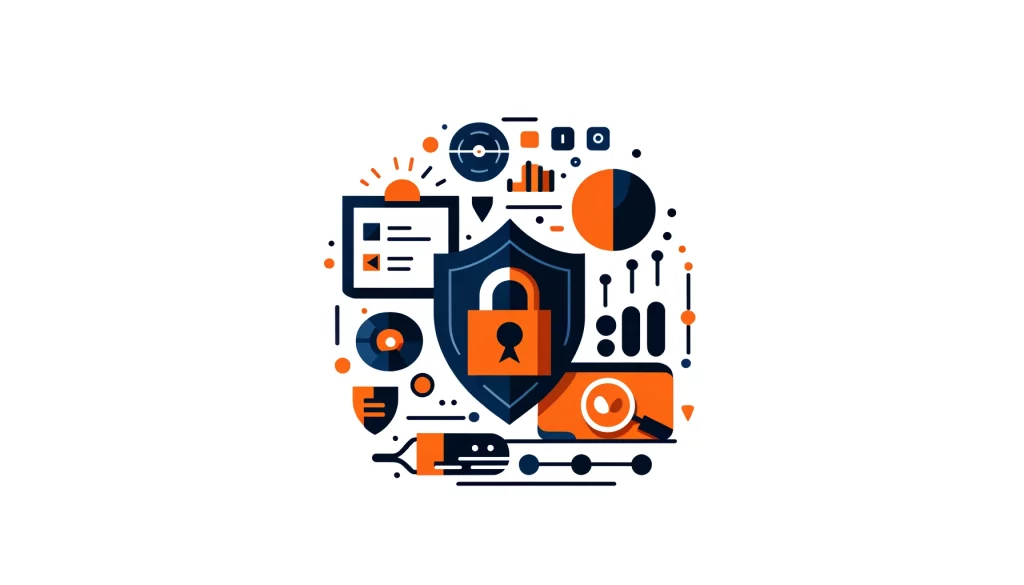
Effective Strategies for Cybersecurity Risk Management

Cybersecurity risk management is a strategic approach to identifying, analyzing, evaluating, and addressing threats to a company’s digital assets. It puts threats based on their potential impact first, ensuring that it handles the most critical issues promptly. This method acknowledges that it is impossible to eliminate all vulnerabilities or block all cyber attacks. Instead, it focuses on managing risks to minimize potential threats.
Effective cybersecurity risk management helps organizations protect their assets and maintain business continuity. By prioritizing critical threats, organizations can allocate resources efficiently and respond to incidents more effectively. For instance, a bank might focus on safeguarding its payment systems to prevent any harmful impacts from a security breach.
The Cybersecurity Risk Management Process
The cybersecurity risk management process typically involves four stages: identifying risk, assessing risk, controlling risk, and reviewing controls.
Identifying Risk
The first step in cybersecurity risk management is to evaluate the environment to identify potential risks. This involves examining all systems, networks, and data sources to pinpoint vulnerabilities. For example, a company might identify risks associated with outdated software, weak passwords, or unpatched systems.
Assessing Risk
Once you identify risks, the next step is to analyze them to determine their likelihood and potential impact. This process prioritizes which risks need immediate attention and which risks can be addressed later. For example, a hospital can predict the chance of a ransomware attack by thinking about how probable it is. They could also examine the potential impact on patient care and data security.
Controlling Risk
After assessing the risks, organizations must define methods and procedures to mitigate them. This can include implementing new technologies, changing processes, or adding security measures. For example, a company might deploy a firewall to block unauthorized access or use encryption to protect sensitive data.
Reviewing Controls
The final step is to evaluate the effectiveness of these controls on an ongoing basis. This involves regularly reviewing and adjusting the measures in place to ensure they continue to protect against evolving threats. For instance, an organization might conduct regular security audits to identify gaps in their defenses and make necessary adjustments.
Conducting a Cybersecurity Risk Assessment
A cybersecurity risk assessment helps organizations identify key business objectives and the IT assets needed to achieve them. It involves mapping out the threat environment and understanding how different risks can impact these objectives.
For example, an e-commerce company might conduct a risk assessment to identify threats to its online payment system. This process involves evaluating the likelihood of various attacks, such as phishing or malware. It also considers how these attacks could impact customer data and financial transactions.
Common Cyber Threats
Cyber threats come in many forms, each posing unique challenges to organizations. Some of the most common threats include adversarial threats, natural disasters, system failures, and human error.
Adversarial Threats
These include attacks by hackers, insider threats, and malicious software. Large organizations often establish a security operations center (SOC) to monitor and respond to these threats. For example, a bank might face adversarial threats from hackers attempting to steal customer data or disrupt services.
Natural Disasters
Events like hurricanes, floods, and earthquakes can cause significant damage to both physical and digital resources. Organizations can mitigate these risks by distributing operations across multiple sites or using cloud resources. For instance, a data center located in an earthquake-prone area might back up its data to a cloud service in a safer region.
System Failures
Failures in critical systems can lead to data loss and business disruptions. Ensuring high-quality equipment, redundancy, and timely support can help mitigate these risks. Healthcare providers use extra servers to ensure patient records are always accessible, even if one server fails.
Human Error
Employees can inadvertently introduce risks by falling for phishing scams or misconfiguring systems. Regular training and strong security controls can help prevent these issues. A good firewall and antivirus can stop malware from spreading if an employee clicks on a harmful link by accident.
This means that the firewall and antivirus software can stop the harmful software from infecting the entire system. By blocking the malware, the firewall and antivirus protect the company’s network and data. This is why it is important for companies to have strong cybersecurity measures in place.
Key Threat Vectors
Several common ways can compromise security. These include unauthorized access, misuse of information by authorized users, data leaks, loss of data, and service disruptions.
Unauthorized Access
This can result from malicious attackers, malware, or employee error. Implementing strong access controls and monitoring systems can help detect and prevent unauthorized access. For example, a company might use multi-factor authentication to ensure only authorized personnel can access sensitive systems.
Misuse of Information
Insider threats can misuse information by altering, deleting, or using data without authorization. Regular monitoring and strict access controls can mitigate these risks. An employee could misuse financial records, but regular audits can help catch and stop this behavior.
Data Leaks
Threat actors or cloud misconfigurations can lead to data leaks. Ensuring proper configuration and using data loss prevention tools can help protect sensitive information. A company can use encryption and access controls to keep customer data safe in the cloud.
Loss of Data
Poorly configured backup processes can lead to data loss. Regularly testing backups and ensuring proper configuration can prevent this.
For instance, a company needs to test their backups often. This ensures that we can recover data quickly in an emergency. Testing backups regularly is important for companies. It helps them prepare for any unforeseen situations.
Service Disruption
Downtime can result from accidental issues or denial of service (DoS) attacks. Implementing redundancy and robust security measures can help maintain service availability. For example, a company might use load balancing and redundant servers to ensure continuous service even during an attack.
Cyber Risk Management Frameworks
Several frameworks provide standards for identifying and mitigating cybersecurity risks. These include NIST CSF, ISO 27001, DoD RMF, and the FAIR framework.
NIST CSF
The NIST CSF provides guidelines for managing risks in cybersecurity. It helps with protecting against, detecting, identifying, responding to, and recovering from cyber threats.
ISO 27001
The ISO/IEC 27001 framework provides standards for systematically managing risks to information systems. Many people often use it in conjunction with the ISO 31000 standard for enterprise risk management.
DoD RMF
The DoD RMF provides guidelines for assessing and managing cybersecurity risks in DoD agencies. It includes steps like categorizing, selecting, implementing, assessing, authorizing, and monitoring controls.
FAIR Framework
The Factor Analysis of Information Risk (FAIR) framework helps enterprises measure, analyze, and understand information risks, guiding them in creating effective cybersecurity practices.
Best Practices for Cybersecurity Risk Management
Implementing best practices can help organizations manage cybersecurity risks more effectively.
Integrate Cybersecurity into Enterprise Risk Management
The enterprise risk management framework should fully integrate cybersecurity. This approach makes cyber risk management more understandable and actionable for business leaders.
Identify Critical Workflows
Identify workflows that create the most business value and assess their associated risks. For example, payment processes are crucial but also present significant risks, such as fraud and data leakage.
Prioritize Cyber Risks
Prioritize risks based on their potential impact and the cost of prevention. Address high-level risks immediately, while manage low-level risks over time.
Continuous Risk Assessment
Perform ongoing risk assessments to keep up with evolving threats. Regular reviews and updates to risk management processes help identify and close security gaps.
Real-World Examples
Consider a financial institution that uses cybersecurity risk management to protect its assets. The institution identifies critical systems, assesses the risks, and implements controls to mitigate these risks. For instance, they might deploy advanced firewalls and conduct regular security audits.
Another example is a healthcare provider that integrates cybersecurity into its enterprise risk management framework. They create workflows for patient data and assess risks. They implement measures such as encryption and access controls to protect sensitive information.
Conclusion
Cybersecurity risk management is essential for protecting a company’s digital assets and ensuring business continuity. By identifying, assessing, controlling, and reviewing risks, organizations can manage threats effectively and maintain a strong security posture. Following best practices and using proven frameworks can help organizations protect their important systems and data from changing threats.
